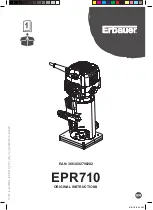
26
Chapter 6 - Basic Configuration Guide
IP Protocol
Required for IP
There are two ways to set up Frame Relay. One is to set the WAN inter-
face as a “numbered interface.” This means that the interface (and thus
the Frame Relay network) will have an IP address, subnet mask, etc.
The other is to set it as an unnumbered interface and specify that the
link is point-to-point Frame Relay and set the local DLCI.
Required for IP Numbered Interface
•
IP numbered interface
•
IP address
•
IP subnet mask
•
IP broadcast address
CV: Use the TCP/IP Routing: WAN Dialog Box.
TB: Use the configure command and the Numbered, IPAddress,
SubnetMask, and IPBroadcast keywords in the IP WAN 0
(and/or WAN 1) section.
Required for IP Unnumbered Interface
•
IP unnumbered interface
•
Point-to-Point Frame Relay
•
Local DLCI
CV: Use the TCP/IP Routing: WAN Dialog Box.
TB: Use the configure command and the Numbered, PointToPoint-
Frame, and InterfaceDLCI keywords in the IP WAN 0 (and/or
any other port you wish to configure) section.
Suggested for IP
These parameters help supply information about the segment that the
interface is connected to. With this information, routing can take place.
•
Set IP RIP 1, IP RIP 2, or OSPF (Open Shortest Path First)
•
IP Static Routes
CV: Use the TCP/IP Routing: WAN Dialog Box to set RIP or OSPF,
and the IP Static Routing Dialog Box (under Global/IP Static
Routes) to set static routes. To set parameters for OSPF, refer to
the CompatiView Management Software Reference Guide.
TB:
Use configure and set either the RIPVersion keyword or the
OSPFEnabled keyword in the IP WAN 0 (and/or WAN 1)
section. Add static routes and a default router using the edit
config IP Static command.














































